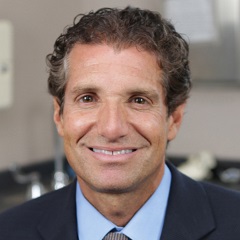Total Shoulder Replacement Provides Relief, Increased Quality of Life
Surgery still not as well-known as other joint replacement procedures
 DAYTON, Ohio (April 25, 2017) – Hip and knee replacements have become a routine surgical procedure in the United States, and offer millions of Americans a reprieve from the pain and disability that comes from the damage done by arthritis and injuries.
DAYTON, Ohio (April 25, 2017) – Hip and knee replacements have become a routine surgical procedure in the United States, and offer millions of Americans a reprieve from the pain and disability that comes from the damage done by arthritis and injuries.
Unfortunately, total shoulder replacement – while offering the same level of success – has yet to garner strong awareness among those who really need it, according to the orthopedic surgeons with Premier Orthopedics.
“Nearly everyone over the age of 60 has a friend or loved one who has undergone a knee or hip replacement and they know what to anticipate, but total shoulder replacement is a different story,” said Michael Griesser, MD, who along with Anthony Checroun, MD and Michael Herbenick, MD, performs total shoulder replacements with the Premier Physician Network practice.
A total shoulder replacement is when the shoulder’s normal ball and socket joint is removed and replaced with metal and plastic parts. There are several reasons a person may consider a total shoulder replacement, such as osteoarthritis of the shoulder joint, fractures within the shoulder joint, rotator cuff tear, or a combination of all three conditions, Dr. Griesser said.
Total shoulder replacement surgery is a newer entity, but has made significant strides since it was first introduced about 15 years ago. Dr. Griesser said he fields a host of questions from patients, such as, “Is this an experimental procedure?” or “Is this something that is done regularly?”
“I tell them that, in many ways, it is very similar to a total hip or knee replacement,” he said. “It’s an inpatient surgery that will provide significant improvement to a person’s quality of life within the first few months of their recovery.”
Dr. Checroun said a person undergoes a total shoulder replacement after other conservative measures have failed. These may include injections, anti-inflammatories, time, rest and physical therapy. A fracture in the shoulder, for instance, may not respond to non-operative therapies and often prolong the pain and lessen a person’s quality of life, he said. Other conditions such as arthritis and a rotator cuff tear often times respond to conservative measures and help a person avoid surgery altogether.
“Non-operative treatments can be used as long as the patient is comfortable and progressing well in terms of their pain,” Dr. Checroun said. “In fact, in many cases, we can use non-operative therapies to avoid a patient ever needing a total shoulder replacement.”
 Manual laborers, people who regularly work with their hands and arms are at a greater risk of developing conditions or injuries that may need a total shoulder replacement. Those who are predisposed to arthritis or have experienced an injury to their rotator cuff are also at a higher risk.
Manual laborers, people who regularly work with their hands and arms are at a greater risk of developing conditions or injuries that may need a total shoulder replacement. Those who are predisposed to arthritis or have experienced an injury to their rotator cuff are also at a higher risk.
Unfortunately, it is common for people to live with pain or a disability that could be corrected or improved with a total shoulder replacement. Dr. Herbenick said he has seen patients come into his office complaining of shoulder pain that has been around for at least six months.
“I can’t stress enough how important it is for people who have pain like this evaluated as soon as it begins to impact their quality of life,” Dr. Herbenick said. “The longer a person waits to have it evaluated, the harder it will be to intervene and improve upon it. Everyone has aches and pains, but they should get it evaluated if it doesn’t go away after two weeks and does not respond to rest and anti-inflammatories.”
For more information on total shoulder replacement or to find a Premier Orthopedics physician near you, visit www.PremierOrthoOH.com.
Contact Us
Discover more about Premier Health and join us in building healthier communities in Southwest Ohio. Learn more about working at Premier Health, becoming a volunteer, and making a gift to support our mission.

